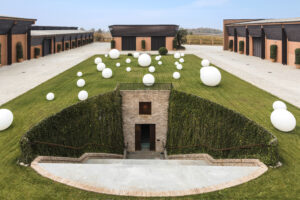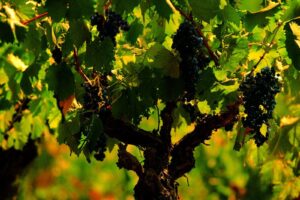Low and alcohol free wines will continue to divide opinions and the market for a long time to come. On one hand, there are those who consider them an enormous business opportunity. On the other, there are those who believe they should have nothing to do with the name wine. However, the low and free alcohol drinks sector - from beer to cider, and also wine and Gin - is now a solid reality, and according to IWSR data, boosted the economy by 22 billion US dollars in 2022, while growth is expected to be around +7% annually over the next five years. This is the reason why ProWein decided to dedicate an entire space to the category, in its most recent edition thanks to the interest trade has shown, as revealed in the “ProWein Business Report 2022” (here, the major economic issues: https://winenews.it/en/major-economic-issues-at-the-center-of-wine-supply-chain-entrepreneurs-attention_489312/). The Report surveyed the points of view of 1.150 sector professionals - wine merchants, importers, distributors, restaurateurs - from 16 different countries.
63% of those interviewed said their highest expectations were bubbles, and 60% said 2023 will be the year of white wines, while a third of wine professionals (33%) expect excellent performance from low alcohol wines, and 24% are ready to bet on the success of alcohol free wines. These percentages are not all marginal as there are enormous differences between one market and another. Alcohol free wines, for instance, got 53% of the votes in Great Britain, 43% in Holland, 36% in Finland, 34% in Germany, 33% in Norway, 24% in Belgium, 22% in Denmark, 21% in Spain, just 20% in the United States and 19% in Switzerland. Further, expectations are high in the UK for low alcohol wines, and 67% of British professionals said performances will be excellent. The percentage dropped to 56% in Norway, 51% in the USA, 43% in the Netherlands, 36% in Canada, 34% in Portugal, 31% in Germany and France and 18% in Spain and Switzerland.
The potential success of low and alcohol free wines on the British market is dictated also by UK taxation, because taxes depend on alcohol content. There is no tax levied on an alcohol free wine. In the low and free alcohol category, expectations are highest for white wines, and 73% of the international trade expects good performances in 2023, followed by sparklings (58%), rosés (37%) and reds (27%). The results, at least according to typologies, show that reduced alcohol content in sparklings can best be compensated, in sensory terms, through carbonation, while the wine industry has greatly improved results for white wines in the last few years. When it comes to red wines, though, things are a bit more difficult, because by removing alcohol content, tannins become more prominent, and rebuilding a sensorial balance is not always simple.
The most responsive countries on the markets are the Scandinavian countries (Denmark, Sweden and Norway), but considering sparkling countries, the most optimistic are Canada (91%), Italy (79%), the USA 78%), Norway (78%) and Sweden (76%). Regarding white wines, however, the most accessible countries are Denmark (78%), Norway (78%), Sweden (76%), Holland (69%) and Canada (68%). Rosé wines are especially popular in Denmark (78%), Norway (67%), Belgium (62%), Great Britain (60%) and Germany (56%). Finally, red wines enjoy excellent prospects in Denmark (83%), Sweden (76%), Canada (64%), the USA (63%) and Norway (56%).
Perhaps the most interesting aspect in the ProWein Report concerns the reactions of the trade and wine producers to the changing market. 16% of trade professionals are ready to put low and free alcohol wines in their portfolio, while it increases to 49% for those who believe in the positive performance of the category. 11%, therefore, will add non-alcoholic wines to their proposals (47% among those who believe in the category). The majority of producers, on the other hand, 52%, have no plans to change, while 10% of the total (30% of those who believe in the category) intend to produce a low alcohol wine, and just 3% will launch an alcohol free wine on the market (15% of those who think that alcohol free wines will do well in 2023).
Further, there are significant differences among the various markets. In the USA, for instance, 43% of trade professionals (93% among the optimists), will put low alcohol wines in their portfolio, but this percentage that drops to 10% (38% among the alcohol free enthusiasts) in Italy. The picture is very different for alcohol free wines, as 29% of the UK trade are ready to deal with this typology in 2023, while only 8% of the USA merchants, importers and distributors are interested. In addition, there is a limit, clearly, to production of low and above all, alcohol free wines. It is an expensive technology, and definitely not within everyone’s reach, so for many companies minimum productions are too high, compared to their own usual numbers. It is easier, but this means only a few degrees difference in alcohol content, to intervene on agronomic and oenological aspects, mainly to respond to the effects of Climate Change. The technological aspect is fundamental for the low and alcohol free wine sector, where experimenting is continuous and change is a constant.
Copyright © 2000/2025
Contatti: info@winenews.it
Seguici anche su Twitter: @WineNewsIt
Seguici anche su Facebook: @winenewsit
Questo articolo è tratto dall'archivio di WineNews - Tutti i diritti riservati - Copyright © 2000/2025








































































































































































































